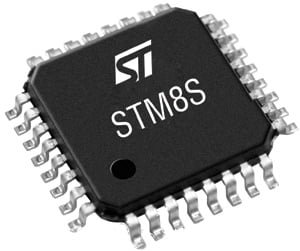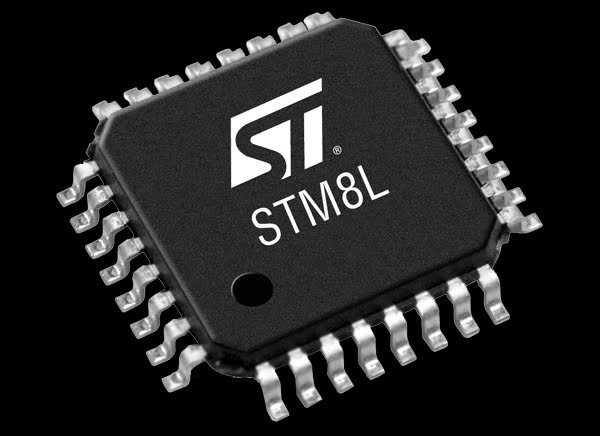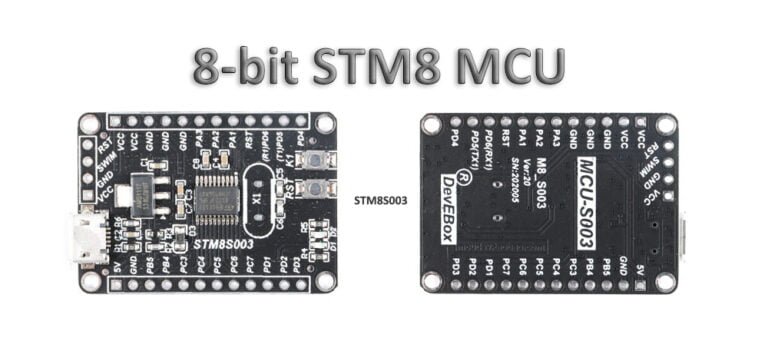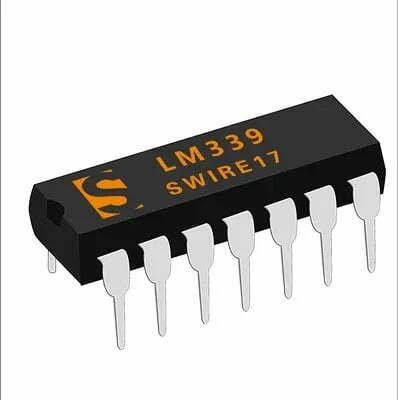The STM8 microcontroller series, introduced by STMicroelectronics in 2009, is a range of 8-bit microcontrollers built around the advanced STM8 core. These microcontrollers feature a 3-stage pipelined architecture, high cost-effectiveness, and ease of development. Depending on the application requirements, the STM8 microcontroller series is divided into three main categories: STM8S, STM8L, and STM8A.
Features of STM8 Microcontrollers
1. Advanced STM8 Core: Utilizing a Harvard architecture with a 3-stage pipeline, the CPU can reach speeds of up to 24MHz and supports an expandable instruction set.
2. Flexible Clock Management: Various clock sources, including HSE, HSI, and LSI, are available, with external clock sources of up to 24MHz. It incorporates a clock security system to monitor the validity of external clocks.
3. Versatile Power Management: The microcontroller operates within a wide voltage range of 2.95V to 5.5V and supports multiple low-power modes, including standby, fast wake-up from halt, slow wake-up from halt, and halt. Individual peripheral clocks can be enabled or disabled to optimize power consumption.
4. Ample Built-in Memory: STM8 microcontrollers feature medium-density program and data storage, with up to 32KB of Flash memory that can endure up to 100,000 write-erase cycles at 55 degrees Celsius for up to 20 years. They also include up to 1KB of true EEPROM, erasable up to 300,000 times, and up to 2KB of RAM.
5. Rich Peripheral Interfaces: The series offers various peripherals, including I2C interfaces at speeds up to 400Kbps, SPI interfaces at 10Mbps, UART interfaces, CAN 2.0 interfaces, infrared interfaces, smart card interfaces, ADCs, timers, independent watchdogs, window watchdogs, and buzzers.
6. I/O Ports and Interrupts: High sink current outputs and robust I/O ports that can be independently configured as inputs or outputs. All I/O ports support external interrupts, with up to 4 programmable interrupt nesting levels and a maximum of 32 interrupt vectors.
7. Convenient Debugging Tools: STM8 microcontrollers offer a single-wire debug interface (SWIM) for online programming and non-intrusive debugging. The free ST Visual Develop development environment reduces development costs.
Classification of STM8 Microcontrollers
STM8 microcontrollers are categorized based on their application areas. Two commonly used series are the STM8S and STM8L.
STM8S Series
STMicroelectronics’ STM8S series of mainstream 8-bit microcontrollers are suitable for various applications in industrial, consumer, and computer markets, especially for high-volume production. Based on the STM8 core, these microcontrollers employ ST’s 130nm process technology and advanced core architecture, with a maximum clock frequency of 24 MHz and a processing capability of up to 20 MIPS.

Apart from the built-in EEPROM and RC oscillator, their rich I/O capabilities and high-performance on-chip peripherals are considered key advantages in setting them apart from competing products. The STM8S series is part of ST’s 10-year product availability commitment for STM32 and STM8 microcontrollers, ensuring robust and reliable solutions for designers. A range of tools, from economical discovery kits to more sophisticated evaluation kits and third-party tools, greatly simplifies development using STM8S microcontrollers.
The STM8S series comprises four product lines, each offering different features while maintaining overall compatibility and upgradability to reduce future product design changes.
- STM8S00x Value Line Series: Offers essential functionality at a highly competitive price and now includes products in an 8-pin SO8 package.
- STM8S103/105 Standard Series: Provides additional features and package options.
- STM8S207 Enhanced Series: Equipped with a full set of peripherals to meet the performance requirements of mid- to high-end applications.
- STM8S Access Line Series: Offers more analog features and specialized firmware solutions.
STM8L Series
STMicroelectronics’ STM8L series of ultra-low-power microcontrollers support applications that require extreme power efficiency, such as portable devices. Built on the 8-bit STM8 core, these microcontrollers utilize ST’s proprietary ultra-low-leakage current process technology and achieve ultra-low power consumption (0.30 uA) in the lowest power mode.

The STM8L series includes four different product lines tailored for applications with specific low-power requirements:
- STM8L Value Line (STM8L051/052): Low power mode at 0.35 uA, dynamic run mode at 180 uA/MHz.
- STM8L101 Series: Low power mode at 0.30 uA, dynamic run mode at 150 uA/MHz.
- STM8L151/152 Series: Low power mode at 0.35 uA, dynamic run mode at 180 uA/MHz.
- STM8L162 Series: Low power mode at 0.35 uA, dynamic run mode at 180 uA/MHz.
Development of STM8 microcontrollers
Development of STM8 microcontrollers involves the use of development boards, programming and debugging tools, and computer-based development environments (software).
Programming and Debugging Tools
The simulator employed for STM8 development is the ST-LINK or ST-LINKV2, a versatile debugger that supports the entire range of STM8 and STM32 chips. It is compatible with XP, WIN 7/8/10 systems and integrates seamlessly with various IDE software environments used for STM8 and STM32 development.
STM8 Development Board
The STM8 development board serves as the ultimate target for programming. It is sometimes referred to as a system board or core board. You can either make one yourself or purchase it online.
Development Environment (Software)
On the computer side, you need to install an integrated development environment (IDE) for microcontrollers, including IAR, STVP programming software, and the ST-Link driver.
There are several types of development software available for STM8, with two primary programming and development options: IAR for STM8 and STVD+COSMIC. IAR, on par with Keil, is an embedded development IDE known for its user-friendly interface. STVD, as the official free development environment from ST, is less commonly adopted due to its unique user experience and the absence of an STM8 C language compiler. To develop in C with STVD, it needs to be combined with a third-party C language compiler like COSMIC. Therefore, we recommend using IAR for a smoother development experience.
Additionally, STM8 offers two dedicated firmware programming software options: Flash Loader Demo and STVP. Flash Loader Demo is used for burning pre-compiled binary files via USART but lacks online debugging capabilities, making it less efficient. STVP, like STVD, is developed by ST and relies on ST-LINK to program firmware, with the added capability to configure STM8 chip option bytes. These tools, along with STVD, are collectively referred to as the “sttoolset.”
Conclusion
The STM8 microcontroller series, with its advanced features and different variants, offers a versatile solution for a wide range of applications, making it a competitive choice in the 8-bit microcontroller arena.






